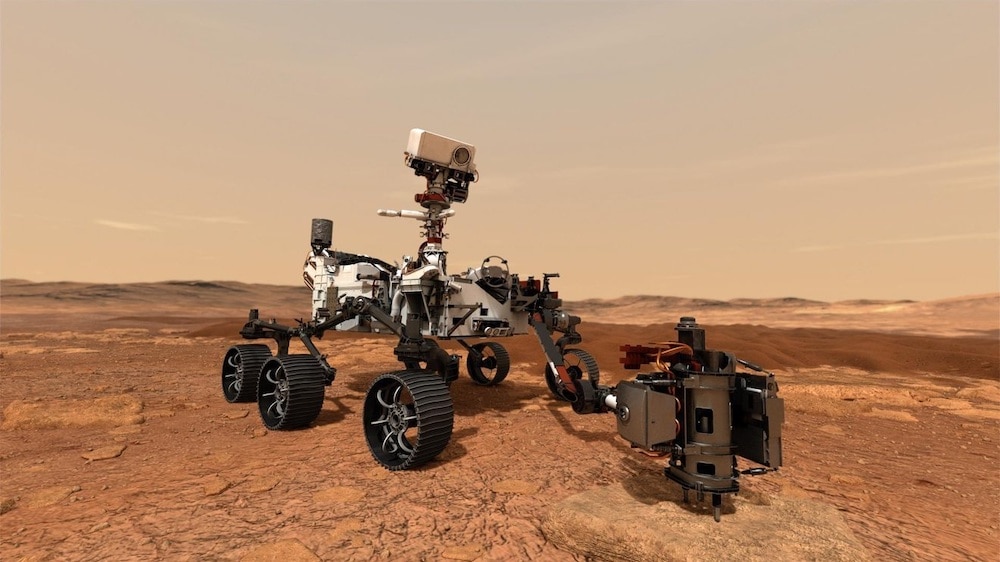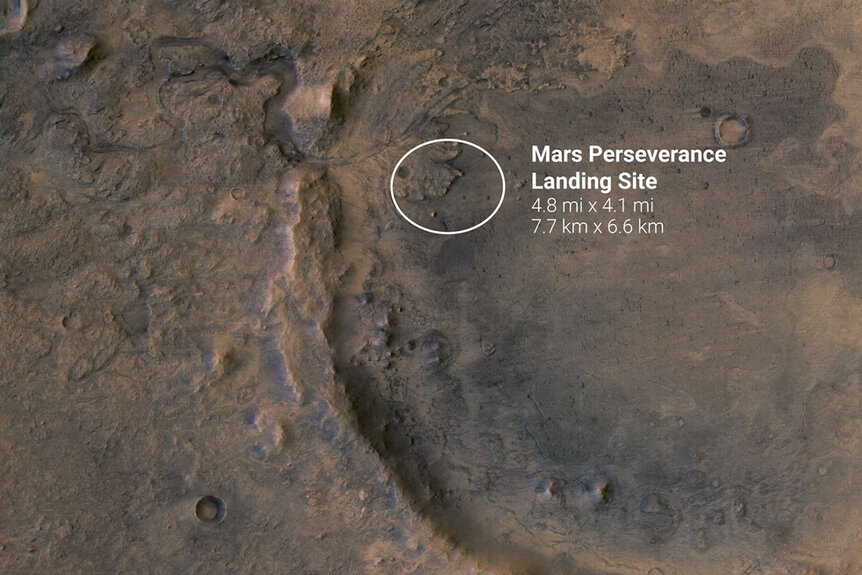Create a free profile to get unlimited access to exclusive videos, sweepstakes, and more!
Everything to Know About the Mars 2020 Perseverance Rover Mission: What it's Done, What's Next
It's been almost four years since Percy left Earth and it's still going strong on Mars.

In 1979, George Miller imagined a rust-colored post-apocalyptic landscape populated by rugged vehicles in Mad Max. With any luck, and continued advancements in alternative energy technologies, we’ll avoid that particular fate in the real world but that doesn’t mean we’re out of options for living out our dystopian nightmares. If you want to see tricked out vehicles roaming a desolate, lifeless wasteland, look no further than the red planet.
The Perseverance Mars rover is NASA’s second car-sized roving science laboratory on Mars, after the Curiosity rover. About the size of an Earthly SUV, Perseverance was designed and built on Earth, at NASA’s Jet Propulsion Laboratory (JPL), specifically for operation on Mars. Nearly four years after the robot affectionately called Percy blasted off into space, it’s still cruising around Mars and making discoveries today. Here’s a look back at the ongoing adventures of the Perseverance rover.
Mars 2020 Perseverance Rover Launch and Landing Date
Percy was designed for a multifaceted mission to look for possible habitability in Mars’ past, collect and store rock samples for a potential future recovery mission, and test an oxygen production system for future crewed missions.
For More on the Perseverance Rover:
NASA's Perseverance Spies Damaged Ingenuity Helicopter on Mars
Mars’ Jezero Crater Was the Perfect Place for Ancient Martian Life
See Mars’ Jezero Crater for Yourself in this Stunning Video Tour
The rover launched atop an Atlas V rocket from Cape Canaveral on July 30, 2020. It spent 29 weeks sailing across space, before arriving at Mars and descending through the thin atmosphere to the surface. Percy landed on Mars on February 18, 2021, following the infamous 7 minutes of terror. The descent process involves punching through the atmosphere, deploying high-speed parachutes, and dropping from a retro-jet powered sky crane, all without any direction from Earth. The communications delay from Mars is long enough that the whole thing is over before we could intervene.
The chosen landing site was Jezero crater, believed to be home to an ancient river delta. Three billion years ago, give or take, rivers flowed over the crater’s edge, creating a lake in its interior. If life ever existed on Mars, Jezero is the sort of place it might have been. If extinct Martian microbes did live in the crater, they might have left evidence behind which Perseverance could collect. In fact, it may have collected that evidence already, contained in the couple of dozen rock samples Percy has stowed away.
The Greatest Hits of the Perseverance Rover So Far
To date, Percy has traveled about 15 miles (25 kilometers) across the crater’s interior. Along the way, it has discovered igneous rocks from lava flowing into the crater. Lava rocks are of particular interest because they can record the conditions under which they were formed.
Meanwhile, investigation of the crater has revealed new information about the watery history of the red planet. Evidence of sediments and boulders from distant locales suggests strong water flows including floods in the Martian past. Percy has collected a couple of dozen rock samples for future analysis on Earth, assuming a recovery mission gets off the ground.
As it travels from place to place, picking up and analyzing rocks, one of Percy’s onboard instruments has been setting the stage for astronauts to one day live and work on Mars. The Mars Oxygen In-Situ Resource Utilization Experiment (MOXIE) tested a device for producing oxygen using only ingredients on Mars. It produced about 122 grams of oxygen, enough to keep an astronaut supplied with breathable air for about four hours. Future versions could be scaled up to produce all the oxygen a crew would need for a mission.
At the time of writing, Perseverance has spent 1,190 days (1,158 Martian days) studying the historical record in Jezero crater and rewriting our understanding of the red planet. With any luck (and if the continued success of the Curiosity rover is any indication) it’ll be uncovering cool stuff on Mars for years to come.
Visit a fictional red wasteland in Mad Max, streaming now on Peacock.



























